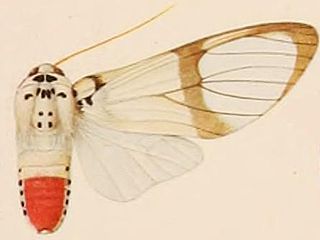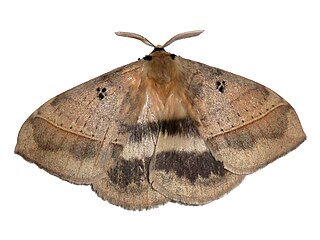| Monstruncusarctia decemmaculata | |
|---|---|
| Scientific classification | |
| Kingdom: | Animalia |
| Phylum: | Arthropoda |
| Class: | Insecta |
| Order: | Lepidoptera |
| Superfamily: | Noctuoidea |
| Family: | Erebidae |
| Genus: | Monstruncusarctia |
| Species: | M. decemmaculata |
| Binomial name | |
| Monstruncusarctia decemmaculata (Rothschild, 1916) | |
| Synonyms | |
| |
Monstruncusarctia decemmaculata is a moth of the family Erebidae. It was described by Rothschild in 1916. It is found in the Democratic Republic of Congo, Kenya, Tanzania and Uganda. [1]

Moths are a polyphyletic group of insects that includes all members of the order Lepidoptera that are not butterflies, with moths making up the vast majority of the order. There are thought to be approximately 160,000 species of moth, many of which have yet to be described. Most species of moth are nocturnal, but there are also crepuscular and diurnal species.

The Erebidae are a family of moths in the superfamily Noctuoidea. The family is among the largest families of moths by species count and contains a wide variety of well-known macromoth groups. The family includes the underwings (Catocala); litter moths (Herminiinae); tiger, lichen, and wasp moths (Arctiinae); tussock moths (Lymantriinae), including the arctic woolly bear moth ; piercing moths ; micronoctuoid moths (Micronoctuini); snout moths (Hypeninae); and zales, though many of these common names can also refer to moths outside the Erebidae. Some of the erebid moths are called owlets.

Lionel Walter Rothschild, 2nd Baron Rothschild, Baron de Rothschild,, was a British banker, politician, zoologist and scion of the Rothschild family. As a prominent Zionist leader, he was presented with the famous Balfour Declaration which pledged to a Jewish national home in Palestine. Rothschild was the President of the Board of Deputies of British Jews from 1925 to 1926.


